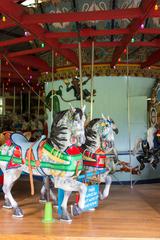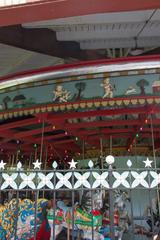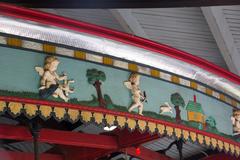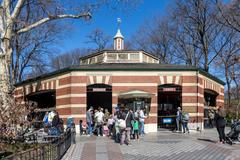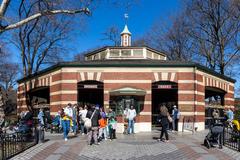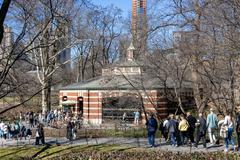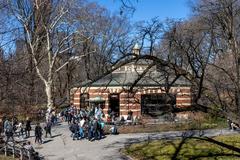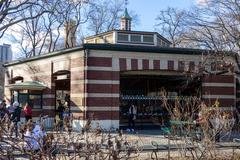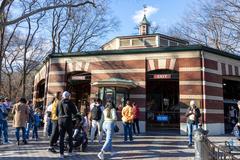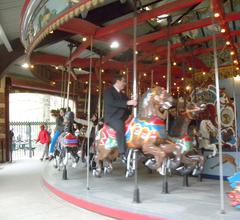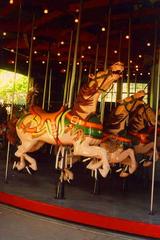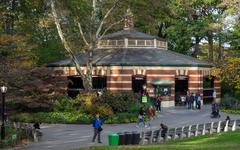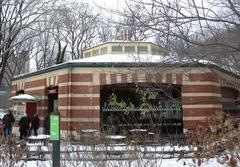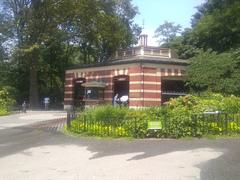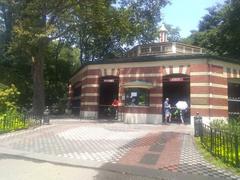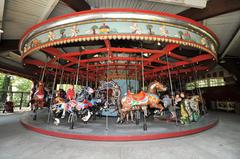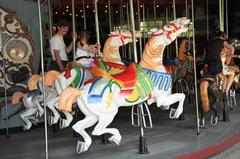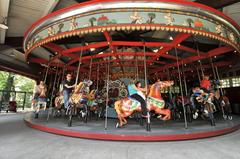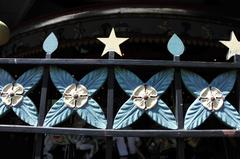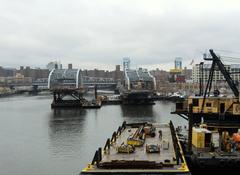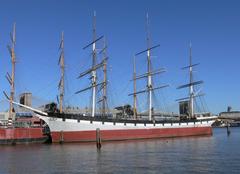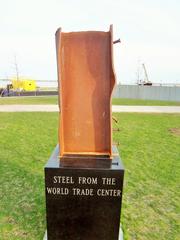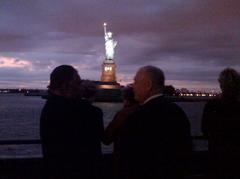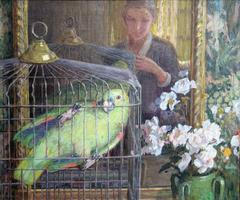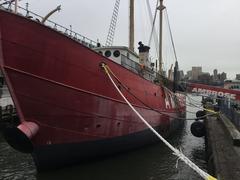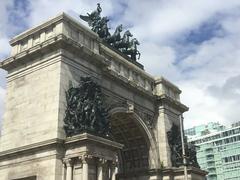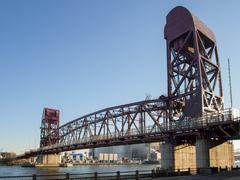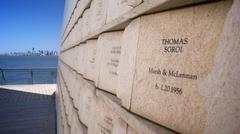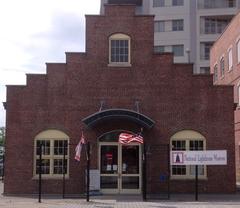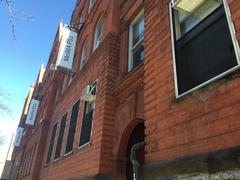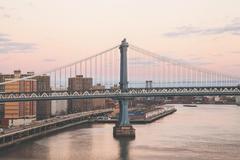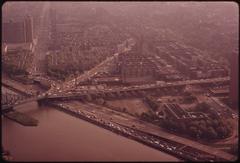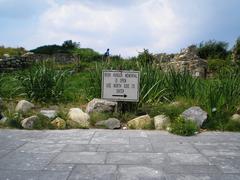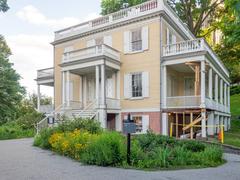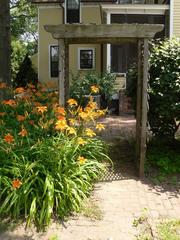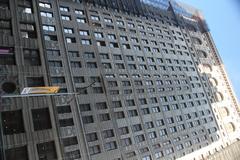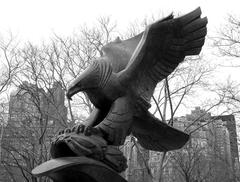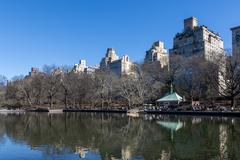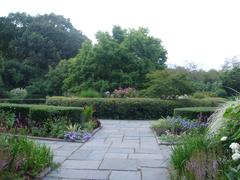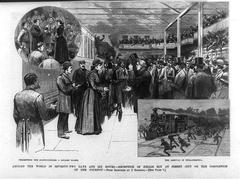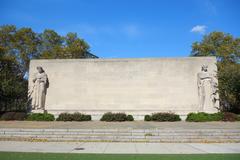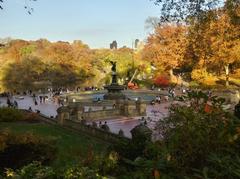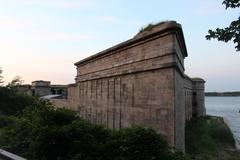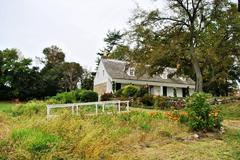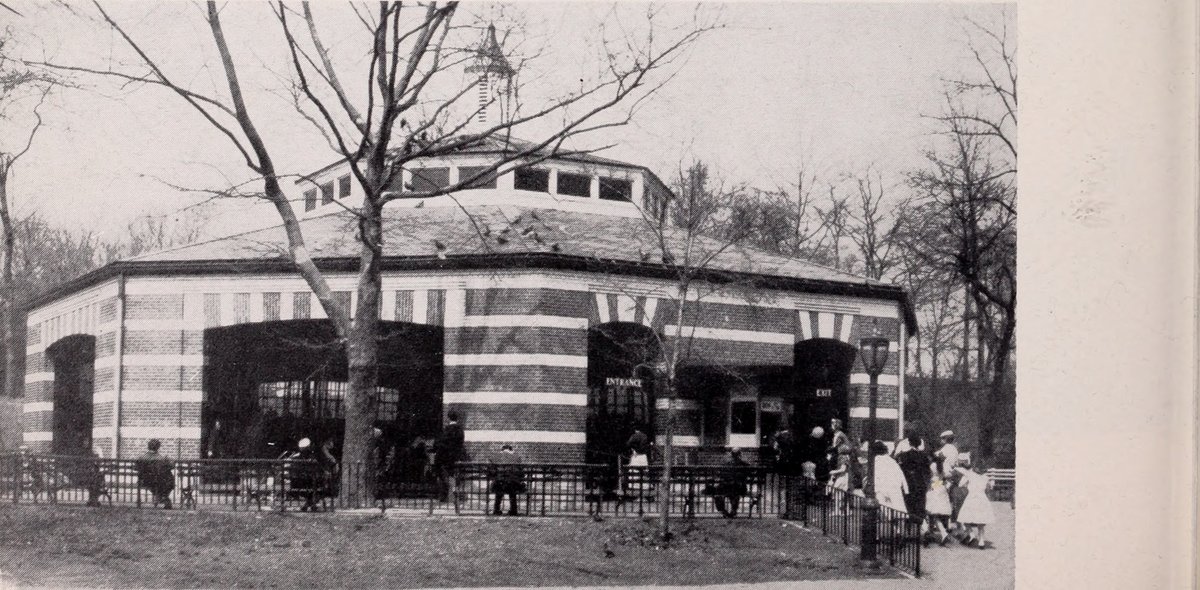
Central Park Carousel Visiting Hours, Tickets, and Historical Significance
Date: 19/07/2024
Introduction
The Central Park Carousel stands as a beloved New York City landmark, intertwining rich history, artistic craftsmanship, and timeless joy. Its origins trace back to the late 19th century, encapsulating the evolution of carousels and reflecting the broader socio-cultural dynamics of the time. From its humble beginnings in 1871, powered by horses and mules, to its modern-day electric marvels, the carousel has seen numerous transformations, each adding layers to its storied past. The first carousel succumbed to a fire in 1922, leading to the installation of the Herschell-Spillman carousel in 1924, which introduced electric power and intricate artistry (Central Park Carousel History and Visitor Guide). This guide delves into the historical journey, architectural wonders, and visitor’s guide to the Central Park Carousel, offering a comprehensive understanding of this iconic attraction. Whether you’re a history buff, an art enthusiast, or a family looking for a delightful experience, the Central Park Carousel promises a magical journey through time.
Table of Contents
- A Carousel with a Story
- The Central Park Carousel Today - A Legacy of Joy
- Visitor Information
- FAQ Section
- Conclusion
A Carousel with a Story - Delving into the Past
The Central Park Carousel, a beloved landmark and a whirl of joyous memories, boasts a history as rich and vibrant as its hand-carved steeds. Its story intertwines with the evolution of carousels themselves, painting a fascinating picture of changing times and enduring traditions.
Early Days and the First Carousel (1871-1922)
The very first carousel to grace Central Park emerged in the post-Civil War era, a time when the park itself was still under development. This inaugural carousel, operational as early as 1871, wasn’t the grand spectacle we know today. It was a simple affair, powered not by electricity but by a team of horses or mules that walked in a circle beneath the platform. Imagine the scene—the rhythmic thudding of hooves, the cheerful strains of an organ grinder’s music, and the delighted squeals of children riding hand-carved animals.
This first carousel, however, met an unfortunate end in a fire in 1922. Its demise marked the end of an era, but it paved the way for a new chapter in the Central Park Carousel saga.
The Herschell-Spillman Legacy (1924-1950)
Two years after the fire, a new carousel, crafted by the renowned Herschell-Spillman Company, took its place. This carousel, larger and more elaborate than its predecessor, marked a significant shift in carousel technology. Gone were the days of animal power; this new marvel ran on electricity, a testament to the burgeoning industrial age.
The Herschell-Spillman carousel, with its intricately carved animals and ornate decorations, quickly became a beloved fixture in Central Park. It was a time when carousels were at the height of their popularity, and the Central Park Carousel became a symbol of childhood joy and wonder.
A Temporary Interlude and a Stroke of Luck (1950-1951)
In 1950, the Herschell-Spillman carousel was removed due to safety concerns. A fire in a nearby carousel in Coney Island had raised alarm bells, prompting a citywide inspection of these amusement rides. A temporary carousel, far simpler in design, filled the void while the city decided the fate of the Herschell-Spillman masterpiece.
Fate, however, had other plans. The city of Toronto expressed interest in purchasing the carousel, and it seemed destined for a new home. But a last-minute change of heart by New York City officials, coupled with a generous donation from philanthropist William Randolph Hearst, saved the day. The Herschell-Spillman carousel was spared the auction block and granted a new lease on life.
Restoration and a Second Chance (1951-Present)
Following its reprieve, the Herschell-Spillman carousel underwent extensive restoration. The wooden animals were painstakingly refurbished, their vibrant colors brought back to life. The intricate details, from the horses’ flowing manes to the chariots’ gilded accents, were carefully preserved.
In 1951, the restored carousel reopened to the public, met with resounding cheers and a collective sigh of relief. It was a triumph of preservation, a testament to the enduring power of tradition and the importance of holding onto cherished landmarks.
The Central Park Carousel Today - A Legacy of Joy
Today, the Central Park Carousel continues to enchant visitors from around the globe. It stands as a testament to a bygone era, a time when craftsmanship and artistry were paramount. Each ride is a journey back in time, a chance to experience the simple joy of a bygone era.
The carousel’s significance extends beyond its historical value. It represents the enduring spirit of New York City, a city that constantly reinvents itself while holding onto its treasured past. It’s a place where generations have come to create memories, a timeless symbol of joy, wonder, and the magic of childhood.
Visitor Information
Tickets and Hours
The Central Park Carousel is located in Central Park near 65th Street in the southern part of the park. It is easily accessible by various forms of public transportation. The carousel is open daily, weather permitting, from 10:00 AM to 6:00 PM. Tickets are reasonably priced at $3.25 per ride. Children under the age of 3 ride for free when accompanied by a paying adult. The carousel operates from April to October, with varying hours during the off-season. Be sure to check the official Central Park website for the most up-to-date information on hours and ticket prices.
Travel Tips
- Best Time to Visit: Weekdays are generally less crowded than weekends. Early mornings and late afternoons provide the best opportunities for a leisurely ride without long wait times.
- Accessibility: The carousel is wheelchair accessible. However, it’s always a good idea to call ahead to confirm any special accommodations.
- Photographic Spots: The carousel itself is a great spot for photos, especially during the golden hour. The surrounding park also offers beautiful backdrops for family pictures.
Nearby Attractions
- Central Park Zoo: Located just a short walk from the carousel, the zoo is a must-visit for families and animal lovers.
- Strawberry Fields: This tranquil section of the park is a tribute to John Lennon and is perfect for a peaceful stroll or a moment of reflection.
- Bethesda Terrace and Fountain: One of the most iconic spots in Central Park, offering stunning views and beautiful architecture.
FAQ Section
Q: What are the Central Park Carousel visiting hours? A: The carousel is open daily from 10:00 AM to 6:00 PM, weather permitting.
Q: How much do Central Park Carousel tickets cost? A: Tickets are $3.25 per ride. Children under 3 ride for free when accompanied by a paying adult.
Q: Are there any special events at the Central Park Carousel? A: The carousel occasionally hosts special events and parties. Check the official Central Park website for updates.
Q: Is the Central Park Carousel wheelchair accessible? A: Yes, the carousel is wheelchair accessible. It’s advisable to call ahead for any special accommodations.
Conclusion
The Central Park Carousel is more than just a ride; it’s a cherished piece of New York City’s history. Whether you’re a local or a visitor, a trip to the carousel offers a delightful journey into the past, filled with joy and wonder. Don’t miss out on this iconic attraction—plan your visit today!
For more information, download our mobile app Audiala, check out related posts on our website, or follow us on social media for updates.

